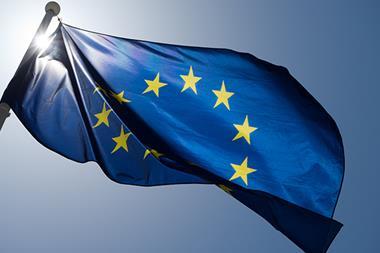The European Securities and Markets Authority (ESMA) wants the EU’s green taxonomy elevated to the top spot when it comes to sustainable finance.
The supervisor issued a formal opinion at the end of July, outlining its hopes for “the functioning of the sustainable finance framework” in Europe.
The document, which addresses everything from the Sustainable Finance Disclosures Regulation (SFDR) to the rules for climate benchmarks, was clear that the taxonomy should take centre stage.
“The EU Taxonomy should constitute the sole common reference point against which sustainability performance should be measured and it should be fully embedded in the Framework,” it stated, referring to the list of business activities the European Commission has identified as being aligned with the bloc’s environmental objectives.
The regulation associated with the taxonomy requires large financial institutions and real-economy companies to disclose how their activities stack up against the list, to give stakeholders a sense of their climate credentials, and to encourage more capital to flow towards green parts of the economy.
ESMA added that eventually the taxonomy should replace the SFDR’s definition of sustainable investment altogether.
From eligibility to alignment
But some think the framework needs rethinking.
A slew of insurers have recently disclosed that less than 10% of their activities qualify under the Taxonomy Regulation.
Achmea and NN Group were among those to reveal that nothing in their underwriting portfolios met the standards. Allianz, widely-known for its leadership on sustainable finance, scored marginally better at 0.9%.
One of the issues is that the regulation requires entities to distinguish between activities that are ‘eligible’ under the taxonomy, and those that are truly ‘aligned’.
In order to fully qualify, an activity has to meet the latter criteria, which is more ambitious than the former: it filters out things that count as green, but don’t survive secondary social and environmental screens.
More than 76% of Allianz’s underwriting activities were eligible under the taxonomy, for example, but this fell below 1% when the Do No Significant Harm and Social Safeguards criteria were included.
As a result, the German Insurance Association, which represents nearly 500 entities, has kicked off a campaign to get the new European Commission to streamline the rules.
In a report titled “Reversing the trend: areas of reforms and recommendations for efficient regulation,” the body calls for lawmakers to restrict the taxonomy disclosures to “important key figures”.
“Insurers must collect a large number of key figures for their investments and present them at portfolio level,” notes the Association. “This involves collecting a lot of information with little relevance for investors, customers, or other stakeholders.”
It suggests that significantly cutting the number of indicators, and focusing on topics like green capital expenditure, would be more valuable.
Data from SMEs, non-EU companies
And it’s not just insurers. Banks and asset managers are covered by equivalent rules.
Advisers to the German government are currently urging the European Commission to revisit the way the taxonomy approaches these calculations, to ensure they don’t misrepresent the green climate credentials of financial institutions.
In another report published last month, the government’s Sustainable Finance Advisory Committee noted that the top-line figure required under the taxonomy, known for banks as the Green Asset Ratio (GAR), “receives a great deal of public attention” and influences the opinion of shareholders and the public.
As well as challenges around achieving full taxonomy alignment – as opposed to just eligibility – when calculating this figure, the Committee highlights frustrations for financial institutions with material exposure to small and medium-size enterprises, and companies outside the EU.
The Taxonomy Regulation carves out securities issued by sovereigns, supranationals and central banks from the underlying universe.
“These exclusions are due to the fact that there is no taxonomy for government activities, so their inclusion in the GAR would increase the denominator even though there is no way of reflecting them in the numerator,” explains the Committee’s report. “This would have the effect of lowering the GAR for no reason”.
However, it points out, exposure to SMEs and companies outside the EU is only excluded from the numerator, which risks distorting the final figure.
“This is because… SMEs and companies from third countries are potentially active in EU taxonomy sectors, but are not required to supply data,” the report explains.
“As a result, data from SMEs and non-EU companies is either not available or, if available, has not been verified or cannot be assessed in terms of quality. For this reason, this data is included in the denominator but not the numerator.”
The Committee has advised the German Government to push the new European Commission, which will be appointed next month, to change the rules.
While the two German bodies want the taxonomy to be pared down, ESMA says that, in order for it to be a suitable cornerstone for the EU’s entire sustainable finance package, it needs to be extended.
In its recent opinion, it suggested the framework should be fleshed out to include definitions for all sustainable activities, as well as transition-related and environmentally harmful ones.
A spokesperson for the European Commission told IPE that the disclosure rules associated with the Taxonomy Regulation would be reviewed as required under the law, and that process would be informed by advice on the framework’s current usability, due to be published by the Platform on Sustainable Finance later this year.
Read the digital edition of IPE’s latest magazine























No comments yet